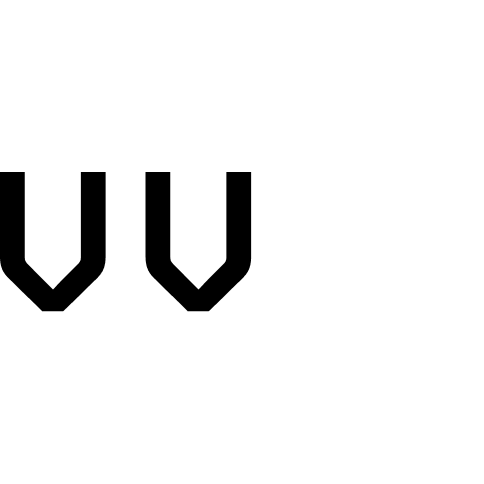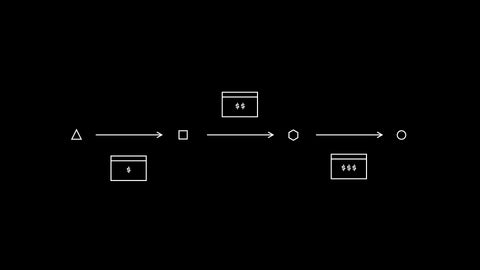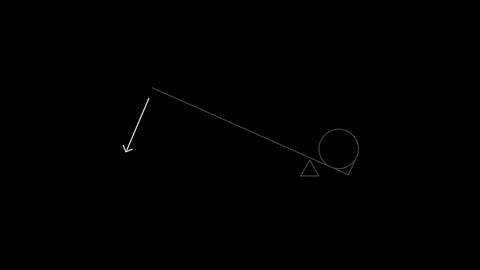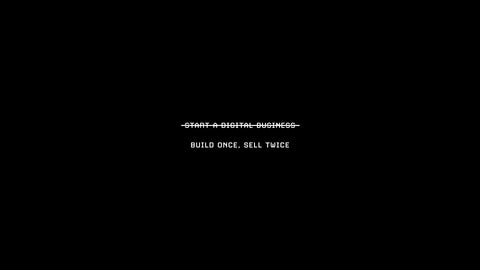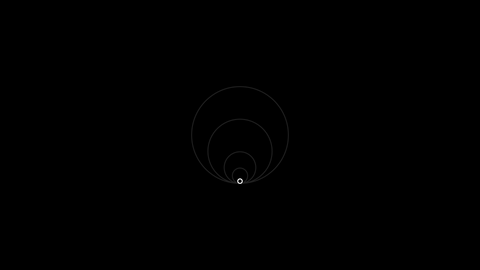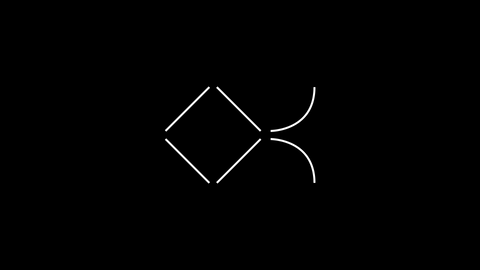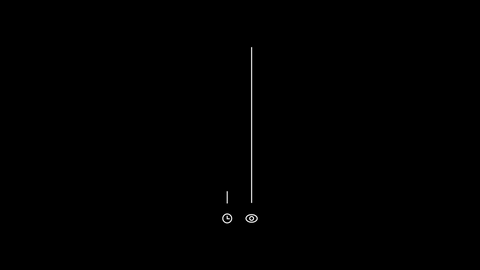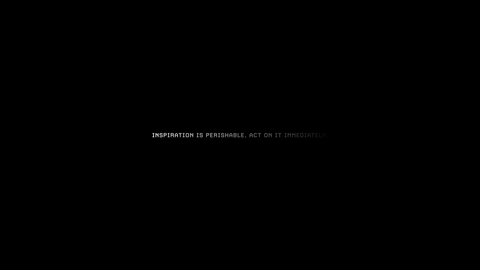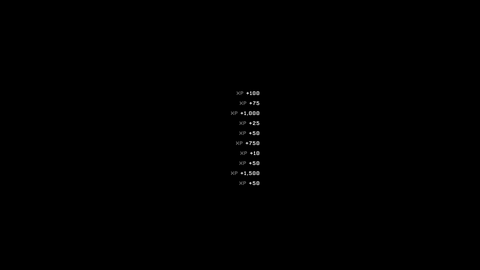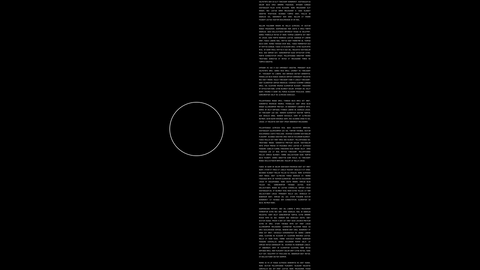Written by Dickie Bush
I binged Build Once, Sell Twice in one sitting.
I expected an online course that would teach me about building and selling.
But it’s more than that. Build Once, Sell Twice is a mindset. A framework. An operating system for the 21st-century internet entrepreneur. And your future self can’t afford to live without it.
Within this operating system, there are hundreds of ideas, principles, and concepts.
But three of them were foundation-shaking - forever burnt into my grey matter.
I call these zero-to-one concepts. Concepts that once you see, you can't unsee.
This isn't an executive summary. It's a selfish distillation of three zero-to-one concepts from Build Once, Sell Twice. It was only by writing them out that I could fully wrap my head around them.
The three zero-to-one concepts:
- Ideas, People, Problems, Products, Proof, Process
- Assets, Equity, and Dividends
- Be the Bridge and Sell Your Sawdust
Ideas, People, Problems, Products, Proof, Process

The TL;DR, six-word summary of BOST: Ideas, People, Problems, Products, Proof, Process.
If you want to sell a product, start with sharing your ideas, attract like-minded people, figure out their problems, solve their problems with products, extract proof once you've solved their problems, and document your process along the way (which becomes a separate product.)
-
Ideas. Start sharing your ideas today. Brainstorm your unique combination of skills, interests, experiences, and perspective. Pick a single platform and start making noise in an authentic way. Tweets, essays, images, blog posts, podcasts, white papers, designs, whatever your medium, the more noise the better. Then, listen for signal.
-
People. You will share your initial ideas into the void. Good. You need time to improve them anyway. But once you make enough noise, some ideas will resonate, both with you and with others. You'll find the ideas you enjoy sharing the people who enjoy them.
Double down on this signal. Sharpen them and tailor them. Before long, you will have built a network of ideas and a network of people with which they resonate.
-
Problems. Like-minded people face similar problems. Luckily, you've built up a network of like-minded people. It's now your job to analyze: • Who are these people? • What do they have in common? • Why do they appreciate your point of view? • Most importantly, what are their problems?
From there, you can call attention to those problems. The ideas you share should put into words the problems your audience faces, but struggle to articulate.
-
Products. With problems identified, it's your job to create products that solve them. Your content should bring attention to the problems and explain why your product is the solution. Position your solution as providing monetary, social, psychological, or practical value in solving their specific problem.
-
Proof. You only need one customer to start. If your product solves their problem, they will rave about it. Iterate and hone your product until extracting this proof is easy. Once it's solving problems consistently, use testimonials and social proof to increase your credibility. Use that credibility to increase your price. Then, repeat.
-
Process. All the while, document your process. Bring people behind the scenes as you build and iterate your product. Build with authenticity and transparency. Distill your knowledge and learnings into process equity. Turn the scraps of your build process, your sawdust, into an asset. This doubles your total market: you have people who will consume your product, and people who will consume your process.
At any point on your journey, you are somewhere between these six steps. Execute accordingly.
Assets, Equity, and Dividends

Assets, equity, and dividends are the foundation of Build Once, Sell Twice.
Your time, energy, and attention are finite. If you spend them poorly, they're gone forever. But if you invest them wisely, they compound.
The goal is to invest our finite time, energy, and attention into building assets. Over time, these assets store our time, energy, and attention as equity. As that equity compounds, we can occasionally extract dividends.
Simple enough.
Simple? Yes. Easy? No.
When viewed this way, your time, energy, and attention become precious. They're all you have. But how often do you let them go to waste? One wasted day here, a couple distractions there, one by one they're gone forever.
Once you become physically ill from the thought of wasting them, you've understood their scarcity.
Before BOST, I thought of equity as capital. When I thought about compound interest, I saw money compounding at 2% a year for many years. Find a way to make money early and let compounding take care of the rest, I thought.
This equity is easy to see because it has an objective measure: dollars.
But BOST revealed four types of unseen equity. Equity that is always there but difficult to measure:
• Process
• Reputation
• Experience
• Relationships
Your cash compensation is simply extracting dividends from this equity. This makes your income a lagging indicator, not a leading indicator.
But the real zero to one moment is understanding how this equity compounds.
Process, reputation, experience, and relationships compound faster than capital. By extracting dividends (cash), we interrupt this powerful compounding force in exchange for dollars, which compound at 2%.
When measuring an opportunity, people overweight the dollar compensation and underweight the process, reputation, experience, or relationships. Everyone does this.
This makes prioritizing the unseen equity 21st-century arbitrage. The best projects, ones that reward you handsomely with this unseen equity, are wide open. Exploit that opportunity.
With this in mind, how should your operations change?
-
Recognize the unseen equity. Work to spend your time, energy, and attention building assets. Allow those assets to compound. Understand that cash compensation is a dividend extraction, and therefore a lagging indicator.
-
Prioritize the unseen equity. Take on projects that compensate in experience, reputation, or relationships.
- Be patient in extracting dividends from this equity. Keep the long view and avoid short-term thinking. Carefully weigh the risk/reward of extracting dividends and interrupting its compounding.
Be the bridge and sell your sawdust

On your journey, there are two groups of people. There are people with more experience than you who you are learning from. And there are people following in your footsteps who you can teach.
See yourself as a bridge between these two groups of people. And build your bridge with process equity.
As you learn, iterate, and build, you will build your process. You could keep this process and experience to yourself, and that would be fine. But with a little extra effort, you can distill your process into an asset. You can then share (or sell) this asset to those following in your footsteps.
This is a subtle but profound shift. You now have two markets:
- Those you sell your product to (whatever it is you're building and selling.)
- Those you sell your process to (those following a similar path you took.)
This concept is called selling your sawdust. You spend your days working, building, and iterating with your saw. But now, you can repackage and share the scraps and byproduct of your creative work - your sawdust.
The benefits of this shift cannot be understated:
-
Clarify and better understand your process. By distilling your experience and process into an asset, you better internalize them. When one teaches, two learn.
-
All of your time, energy, and attention goes toward creating equity. With the bridge and sawdust mindset, there are no wasted resources. You are spending your time, energy, and attention building and selling your product, or distilling and refining your process.
- Increase the size of your total addressable market. The number of people you can provide value to explodes. You have product consumers and process consumers. Congratulations - you've productized yourself.
Your turn
I purchased Build Once, Sell Twice on a whim. After watching Jack execute in public since early March, I knew he had the operating system down.
This course is immediately actionable. When I finished, I shut the module and got to work, first clarifying the ideas in my head, then putting them into action.
Because it’s not an online course. It’s an operating system for the 21st-century internet entrepreneur.
Newsflash: it works. And it works well. And once you internalize it, it will change the way you think about the internet.
If you're considering Build Once, Sell Twice or any Visualize Value product, do it. You deserve it.
And your future self can't afford to live without it.
—
If you want to see how I’m using this operating system or chat about the course, DM on Twitter @dickiebush.
Build Once, Sell Twice is available here.
